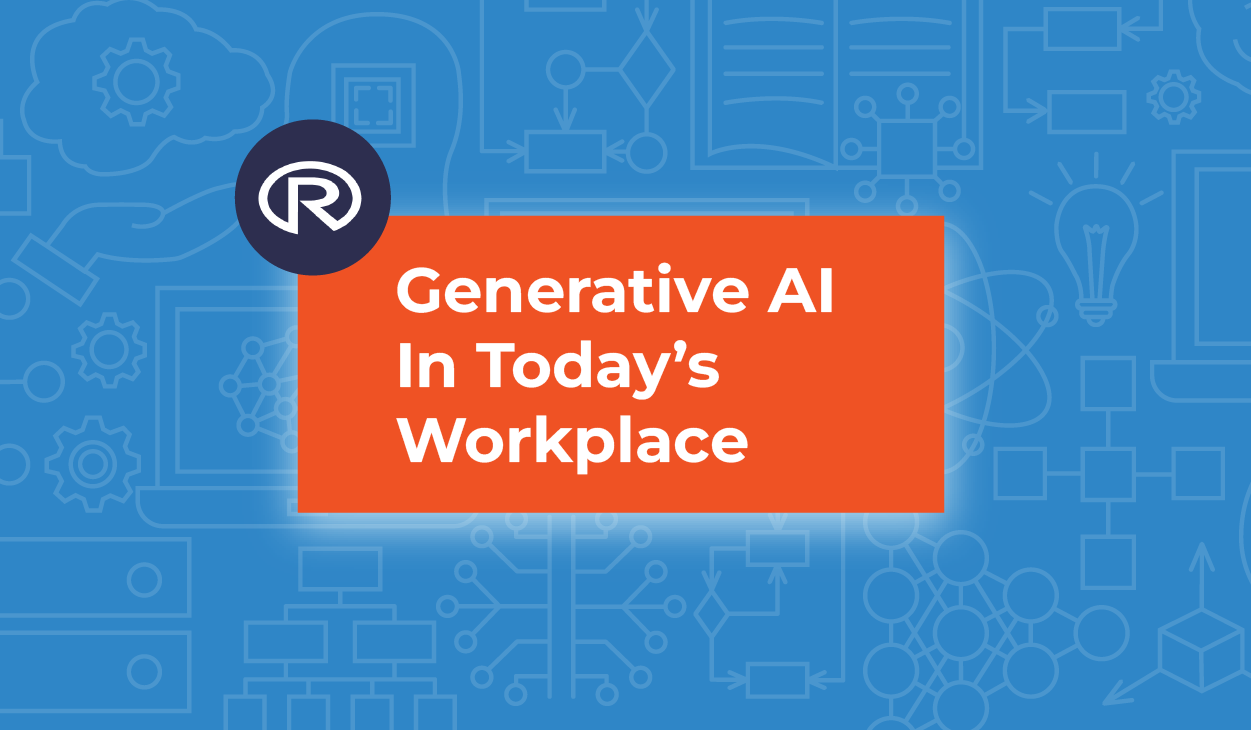Unless you’ve been living under a rock, you have probably heard the phrase, “AI in the workplace,” at some point over the last several years. Conversations surrounding the growing development and accessibility of Generative AI run the spectrum from positive excitement for this technological achievement, to concern for how it will impact creative jobs in the near future, to outright alarm at how easy it now is to generate intelligent-sounding content.
As a graphic designer, I would say that I fall somewhere in the middle of this broad spectrum. The technical achievements made in the artificial intelligence field are impressive, but I find the repercussions to visual artists and creators, such as myself, often frightening. Here at Rhycom, we believe the healthiest approach to Generative AI, like any other new industry tool or trend, is by understanding it. So let’s begin by asking,
What is Generative AI, and how is it different from artificial intelligence?
Artificial intelligence (AI) is a broad term that identifies any technology capable of intelligent behavior. This can include algorithms for social media feeds that learn based on your preferences to more complex data management systems. Generative AI (Gen-AI), specifically, is a type of AI that utilizes machine learning techniques to generate new content based on a data set it’s given. Examples of this are ChatGPT and MidJourney. When these two Gen-AI programs are given “prompts” — English text (ChatGPT) or collections of visual art (Midjourney) — to use as “inspiration,” they will generate fresh content or visual imagery based on what you entered.
The ethical and legal debates around Gen-AI focus on whether these machines are using these human-made data sets as strictly inspiration, or if they are stealing and recreating aspects of human-made art without the artists’ consent. While these conversations are important, the purpose of this article is to explore how visual artists and graphic designers, specifically, can utilize Gen-AI in today’s workplace prudently and effectively.
The most basic question being asked by content marketers, artists and designers across many industries is should they utilize Gen-AI at all. And if yes, how can it be employed so they are not replaced by these programs, but rather these programs are added as yet another useful tool in their toolbelt?
In what ways are designers using Gen-AI effectively?
Fast Concepting & Ideation
Brainstorming and finding inspiration can often be the most enjoyable, or the most time-consuming and frustrating, part of any design project. Generative AI is becoming a new avenue or resource to help find inspiration or form initial concepts. This can be done by simply using an image generator to compile visual inspiration, or using a program like FontJoy to find font pairings that are data proven to be great matches.
Reduce Manual Work & Automate Routine Tasks
Another great way graphic designers can utilize Gen-AI is as their personal assistant. The concern that Gen-AI will grow to replace designers may be valid, but thinking of it as your assistant might help make you more productive and effective than ever before. Imagine having an assistant able to do all the time-sucking and eye-watering tasks we all love to hate — removing backgrounds, converting image file types, enhancing images, video stabilization, and object detection or masking. I’d say yes, please.
Understand Your Own Design Strengths & Trends
It is often said that no one understands you better than you understand yourself. And as true as that may be, designers are often the last people to notice when they fall into style ruts or habitual design behaviors. Generative AI tools may help you better understand your own creative strengths and weaknesses and even help you avoid that treadmill of churning out the same ideas over and over.
Better Understand Your Designs Through Data
Yes, creativity should always push boundaries and draw outside the lines when it’s appropriate (no pun intended). It’s always beneficial and often vital to understand why a design works, or doesn’t work, through the lens of actual data. Gen-AI tools that help designers analyze their work and others’ work through data and analytics can help a good designer become a great designer.
Will Generative AI ultimately remove the need for human designers and creators?
An artist’s style and quality don’t always come from what they do, but rather from why they do it. “Being human” is something that artificial intelligence will never be able to do. We can interpret a client’s feedback, collaborate with teams, and brainstorm ideas; but most importantly, we have passion, imagination, and experience. And while it is true that most everyone is inspired by something or someone else, only humans can dream of ideas that are truly original rather than inspired solely by a pre-determined collection of work. An artist’s true power comes from envisioning the concept before it ever gets created.
Generative AI can often feel intimidating and invasive in today’s workplace, but I encourage fellow designers and creators to view it as a tool to help us efficiently and effectively produce our best work. We often don’t have the luxury of an assistant to do our busy work, or another creator to brainstorm with, but with Gen-AI we do.
The term “intelligence” is often confused with “knowledge”. Gen-AI programs may have intelligence, but they do not have the knowledge to know why, how, and when to do the unique job we are tasked with. Don’t believe your job is unique? Only you know what your client, bosses, and company’s preferences, standards, and desires are. Since a great designer is hired because of their “why,” in addition to their “how.” May we all stay inspired and worry a little less as we venture into the new future of generative artificial intelligence.




